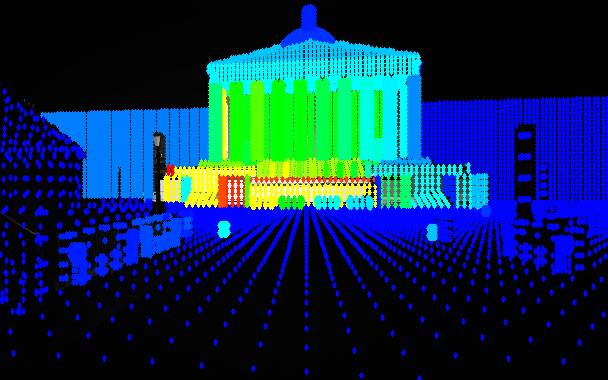 Research
Research

Subject
Modelling Navigational Behaviour through Saliency Based Analysis of the Built Environment
First and second supervisors
Abstract
When designing spaces, one of the main concerns architects face is predicting how their space is perceived and navigated. Several research fields have attempted to answer what governs navigational behaviour such as, spatial configuration, functional details and, most importantly, the visual perception of space. There is, however, no universally accepted methodology that can reliably predict peoples' paths and behaviour in the built environment.
This research aims to understand what affects people's change of direction while navigating space and develop a technique to simulate and predict this behaviour. It examines the application of new methods and techniques, drawing on bottom-up neural pathways to visual saliency detection used in Computer Vision. Saliency is used to determine the attention of subjects on a scene, it has been commonly associated with the location of the gaze from eye-tracking experiments. The project first collects a large volume of data from observational studies of anonymised navigational patterns from visitors of public spaces. In addition, to record the paths people take in a given space, visual inputs received during their navigation of the space will be determined. These visual inputs will be mapped and analysed using a saliency-based technique. Furthermore, the research will employ an artificial neural network to determine whether there is a connection between actions and visual input.
The ultimate goal is to establish a new framework that can comprehensively describe the required inputs for pedestrian navigation. This framework can then be applied to different spaces, whether existing or digitally designed, and will be invaluable to architects who design using evidence-based approaches.
Biography
Stamatis Psarras studied Architectural Engineering at the University of Patras in Greece before graduating from Adaptive Architecture and Computation MSc at The Bartlett. From there, he followed a career in architecture and computational design, developing novel interfaces using gaming engines and parametric models at Foster + Partners in Applied Research and Development. He is currently working at ARUP as a Design Automation Developer, working to improve engineering workflows and processes required in design.
Links
- Publications
S. Psarras, A. Zarkali, A. Fatah. (2019) ‘Visual Saliency in Navigation: modelling navigational behavior using saliency and depth analysis’, The 12th International Space Syntax Symposium (12SSS). Beijing Jiaotong University, 8-13 July.
S. Psarras, M .Kosicki, K. El-Ashry, S. Tarabishy, M.Tsigkari, A. Davis, F. Aish. (2019) ‘SandBOX - An Intuitive Conceptual Design System’, DMS-2019 - Data Science, Machine Learning and Statistics 2019. Van Yüzüncü Yıl University, 26-29 July.
J. Chun, A. Fatah, S. Psarras, P. Koutsolampros. (2019) ‘Agent Based Simulation For Choice Of Seats -A Study On The Human Space Usage Pattern’, The 12th International Space Syntax Symposium (12SSS). Beijing Jiaotong University, 8-13 July.
Zarkali, R. A. Adams, S. Psarras, L. Leyland, G. Rees, R. S. Weil. (2019) ‘Increased weighting on prior knowledge in Lewy Body associated visual hallucinations’, Brain Communications, 1 (1).
S. Tarabishy, S. Psarras, M. Kosicki, M. Tsigkari. (2019) ‘Deep learning surrogate models for spatial and visual connectivity’, ACADIA 2019: Ubiquity & Autonomy. The University of Texas at Austin, 24-26 October.
M. Tsigkari, J. Olsson, H. Malm, S. Psarras, F. Aish. (2017) ‘The Computational Challenges of a Mega Space Frame: Shaping the Envelope of New Mexico’, ACADIA 2017: Disciplines and Disruption. Massachusetts Institute of Technology, 2-4 November.
Image: Modelling Navigational Behaviour, by Stamatios Psarras
 Close
Close

